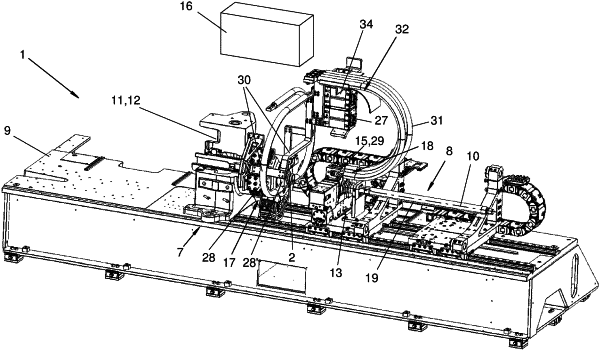| CPC B23K 20/129 (2013.01) [B23K 20/121 (2013.01); B23K 11/02 (2013.01); B23K 13/04 (2013.01); B23K 2103/14 (2018.08)] | 20 Claims |

|
1. A method for joining, using friction and current, two or more workpieces by grinding and by conductive heating with electrical current, the method comprising:
in a contacting phase, moving the workpieces along a process axis such that respective joining surfaces of the workpieces facing each other and oriented transverse to the process axis are brought into contact;
prior to or beginning with the contact of the joining surfaces, rotating the workpieces relative to each other in directions transverse to the process axis or about the process axis;
in a grinding phase that begins with the contact of the joining surfaces, grinding the workpieces against each other, subjected to contact pressure, due to the mutual relative movement at the joining surfaces such that the joining surfaces are made smooth without plasticizing the workpieces;
at the end of the grinding phase, stopping the relative grinding movement of the workpieces; and
in a forging phase directly following the grinding phase, forging, plasticizing, and joining the workpieces at their contacting joining surfaces, subjected to contact pressure along the process axis and subjected to immediate and continuous conductive heating by electric current without frictional relative movement of the workpieces.
|